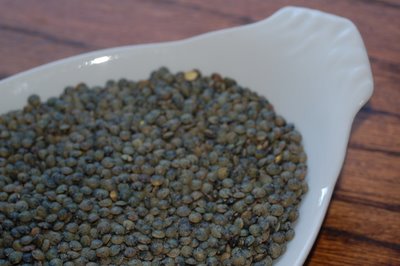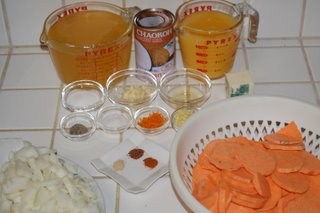Now I find myself part of the food blogosphere. It was quite by accident through my friend Tea, but the support and rapport and sharing I have gotten from all over the world is just incredible. People offering suggestions, sharing every kind of recipe imaginable, and providing feedback that has enriched my life immensely. I am always in awe of the wonderful writing I encounter along the way, the gorgeous food photography I am witnessing, and the delicious recipes that I cannot wait to try. It amazes me that food can bring such a connection.
It is this online community, along with my family and close personal friends, that came to my rescue in the latter stages of the book process to test recipes for The World is a Kitchen. Eager hands willing to try anything, which not only took the burden off of me and yielded an unbiased opinion, but lifted my spirits and boosted my energy to get me through the rest of the ordeal.
I want to properly thank them for their time and support.

Tea over at Tea & Cookies tested two recipes. The first was the Yaki Nasu - Japanese grilled eggplant. This recipe appears in the story “Kaoru’s Kitchen”by Tara Austen Weaver, which takes place high in the snowy mountains of Japan. The second was pelmeni, a small meat-and-fat filled dough pocket. She wrote up a beautiful post, Russian Roots, which included information on culture and the origins of pelmeni, as well as the recipe and a review.
Cream Puffs in Venice is one of my favorite food blogs, because I have a sweet tooth and Ivonne takes the most magnificent pictures of her creations. I absolutely cannot read her blog if I am hungry and have learned to only log in once my belly is full, otherwise I am sure to overeat on things I shouldn’t! Ivonne took on two recipes, one for an Italian Crostata from Catherine Ann Lombard’s story “Guiseppa’s Secret Ingredient.” A simple recipe that can be served for breakfast, tea, or dessert, she chose this particular one as her father’s family is from Italy and her grandmother used to make the “sweet dough smothered in jam.” Her post includes a scrumptious photo, as usual. 
The second recipe was a classic Crepes Suzette. This recipe appears in “Kitchen on Wheels” by Canadian Ann McColl Lindsay and as you can see by the picture here, it was a winner. Check out her post on the subject here. [A extra large thanks goes to Ivonne, as she was kind enough to post about my need for recipe testers, and her large audience pitched right in.]
Jenna of Jennatarianism chose the palak paneer. This Indian staple appears in Josh Flosi’s story, “Cooking with Jas” which takes place in Kenya, of all places. Jenna had a bit of problem in posting her test information (something along the lines of “the blogosphere ate my homework!”), so it is posted on my own food blog
here. I thought no one would volunteer for the Mole Verde, as it had 23 ingredients and was a bit complex. But I knew that Fran of Flavors would not be disappointed when she offered, as this recipe is from Susana Trilling, author of Seasons of My Heart and owner of an Oaxacan cooking school of the same name. The recipe was featured in a story “Tastes of Generosity” by Judy Ware, where she and her husband attended the school at Rancho Aurora in Mexico. Fran was a trooper, as she probably had the most difficult recipe in the book, and her lovely post can be found here.
I thought no one would volunteer for the Mole Verde, as it had 23 ingredients and was a bit complex. But I knew that Fran of Flavors would not be disappointed when she offered, as this recipe is from Susana Trilling, author of Seasons of My Heart and owner of an Oaxacan cooking school of the same name. The recipe was featured in a story “Tastes of Generosity” by Judy Ware, where she and her husband attended the school at Rancho Aurora in Mexico. Fran was a trooper, as she probably had the most difficult recipe in the book, and her lovely post can be found here.  “Mama Rose’s Coconut Bread” by Celeste Brash gave Helene of Tartelette fame a taste of Polynesia. A hearty bread, this recipe was actually tested by two people, who came up with similar reviews. Helene even made the bread twice, once with the coconut juice replacing the water and once with coconut milk replacing the water, which yielded a stronger coconut flavor overall. She also tried the recipe using a mixer one time and a bread machine on the other, with similar results. (My second tester used the old-fashioned hand-kneading method.) Be warned, however, this is not a sweet dense breakfast loaf like banana bread, it is, as you can see from the picture, a hearty white loaf with a wonderful texture. Read her whole post here.
“Mama Rose’s Coconut Bread” by Celeste Brash gave Helene of Tartelette fame a taste of Polynesia. A hearty bread, this recipe was actually tested by two people, who came up with similar reviews. Helene even made the bread twice, once with the coconut juice replacing the water and once with coconut milk replacing the water, which yielded a stronger coconut flavor overall. She also tried the recipe using a mixer one time and a bread machine on the other, with similar results. (My second tester used the old-fashioned hand-kneading method.) Be warned, however, this is not a sweet dense breakfast loaf like banana bread, it is, as you can see from the picture, a hearty white loaf with a wonderful texture. Read her whole post here.
Other wonderful recipe testers include:
Maureen Hargrave – who tested the Sate Lilit from Cindy Wallach’s “Souvenir.” Her response is posted on Eating Suburbia here.
Kathy Badman – my brave sister-in-law who climbed out of her comfort zone to test an African stew. Mafe, from the story “A Scandal in Senegal” by Tom Swenson is a lamb dish, which incorporates peanut butter into the recipe. My brother called me mid-bite to rave about the dish, which, if you knew my brother, is a big deal. She was also the second tester on the coconut bread that Fran at Tartelette tested (see above). Also a big hit with her whole family.
Donna Jones and Carol Shroba –Florida friends tried one of my favorite summer desserts—clafouti. This simple but rich recipe is mentioned in “A Foodie Lesson in Philo” by Lynell George and incorporates the best of summer’s fresh fruits. It got rave reviews. They also served Moqueca de Peixe, a Bahian fish stew, at a dinner party. This Brazilian recipe is featured in the story “Moqueca Feast” where Avital Gad Cykman learns the secret to this recipe, which is typically served to your lover.
Ginny Borkowski, one of my oldest and dearest friends, took on Turkish wedding soup from “Flavor by the Spoonful.” This story, by Helen Gallagher, speaks to the necessity of appreciating the old ways of slow cooking.
Emilia Thiuri, my right hand throughout this book process tackled the tagine with meat and prunes. Many might be put off by the prunes in this recipe, but she assured me that it was a delicious meal. And how can you resist something from a story titled “Honor Thy Mother,” where Rachel Newcomb reaps the benefit of culinary treasures from her new mother-in-law.
Again – a huge huge thanks to all of you. And, in my addled frenetic state to get all things done at once, if I have forgotten to mention you, forgotten to send you a copy of the book for your hard work, please, please let me know. The end of the production process is hectic and I know that I am missing at lease one person from this list (I think it was the tester of the Caldo Tlapeno.)
One final homage here to Sam at Becks and Posh who surprised me while I was on vacation and debuted the book as part of her post on Bay Area bloggers titled “Local Bloggers Have Helped Create Cookbooks.” It was a treat to come home and see this and my new book hot off the press. And congrats to the other local bloggers, Jennifer Jeffrey and chef Andrea Froncillo for their new release The Stinking Rose Restaurant Cook Book.





